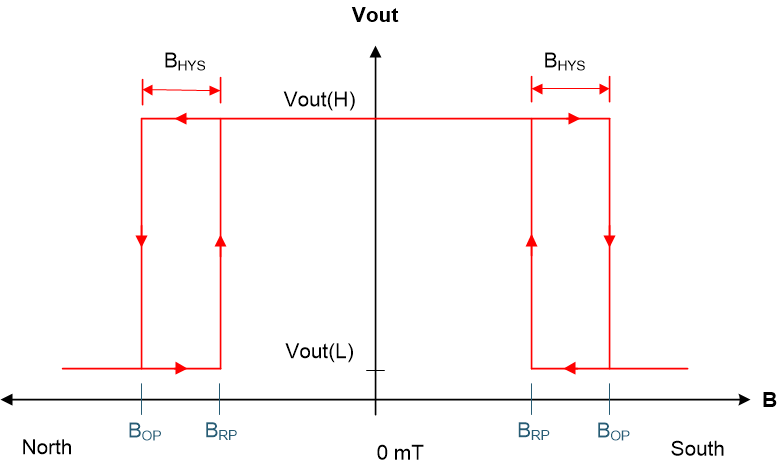ZHCSNY5 May 2021 TMAG5123
PRODUCTION DATA
- 1 特性
- 2 应用
- 3 说明
- 4 Revision History
- 5 Device Comparison Table
- 6 Pin Configuration and Functions
- 7 Specifications
- 8 Detailed Description
- 9 Application and Implementation
- 10Power Supply Recommendations
- 11Layout
- 12Device and Documentation Support
- 13Mechanical, Packaging, and Orderable Information
8.3.2 Device Output
The TMAG5123 is featured with an open drain output. In order to generate a two state output, a pull-up resistor needs to be added.
Once the device is powered and with no magnetic field applied to it, the output stays at Vout(H). As an omnipolar sensor the output will go down to Vout(L) when the field increase beyond the BOP threshold either with a north or a south magnetic field. When the field decrease below the BRP threshold, either with a north or a south magnetic field, the output will go up to Vout(H)
 Figure 8-3 Omnipolar
Functionality
Figure 8-3 Omnipolar
Functionality